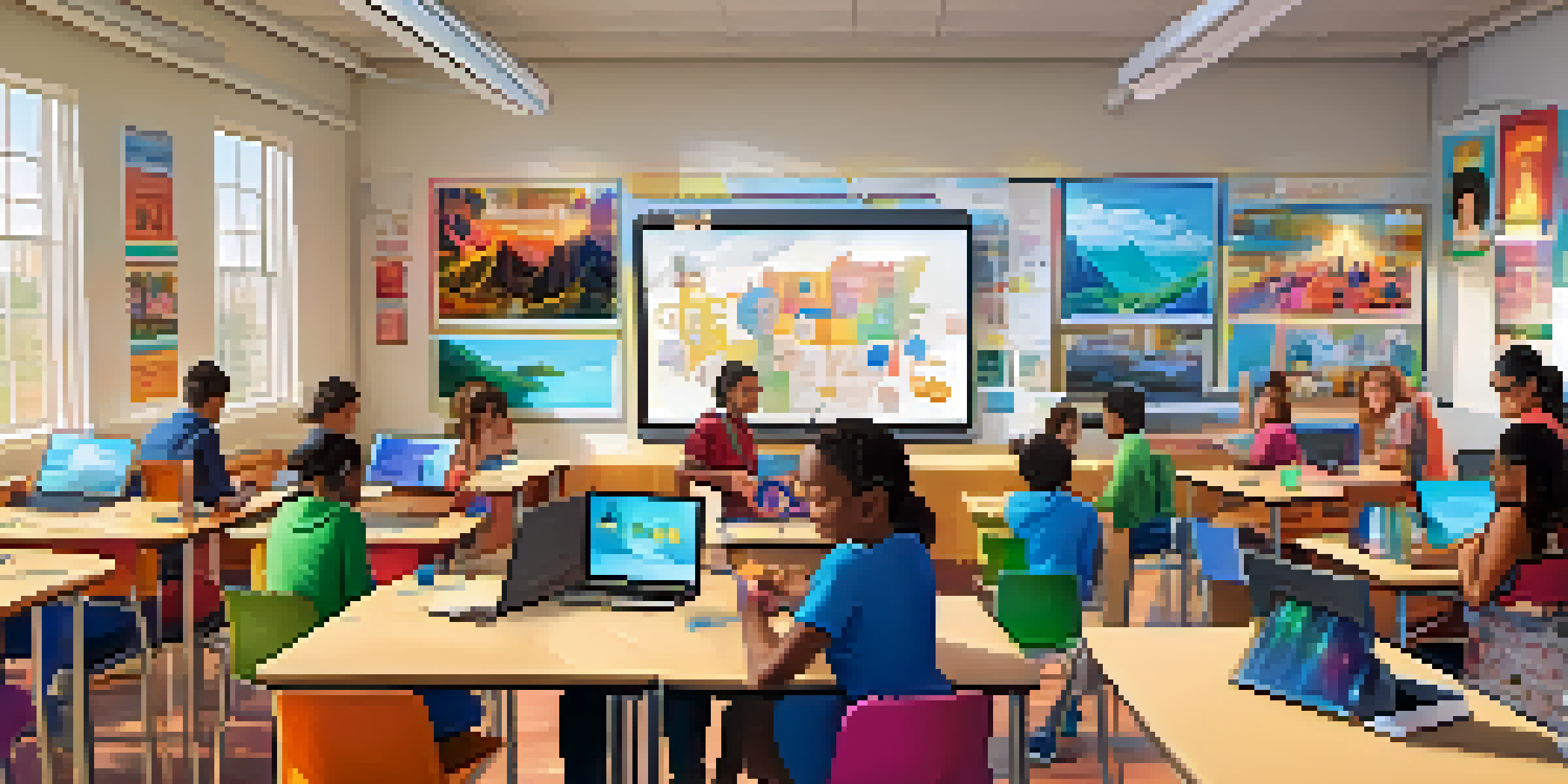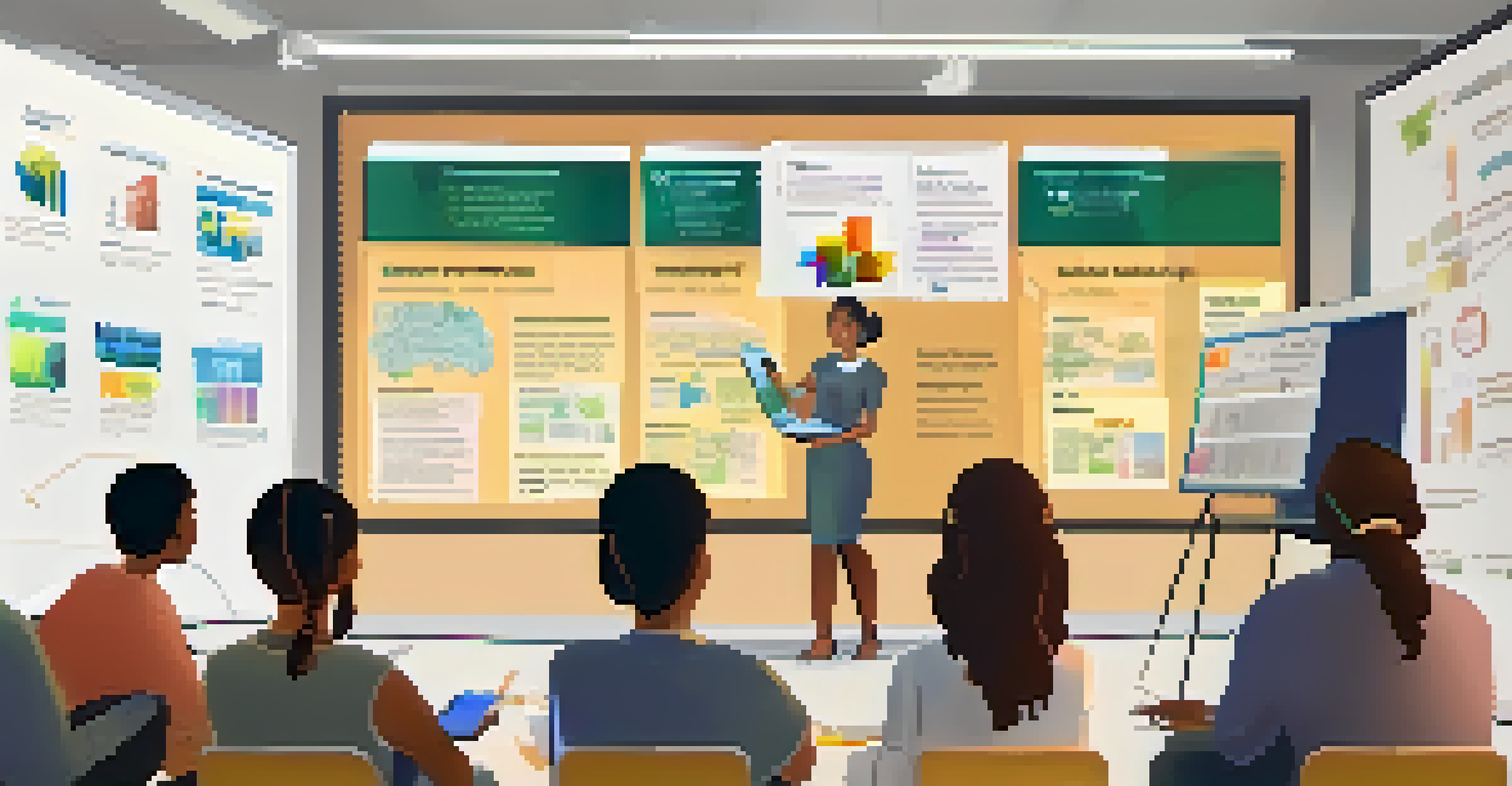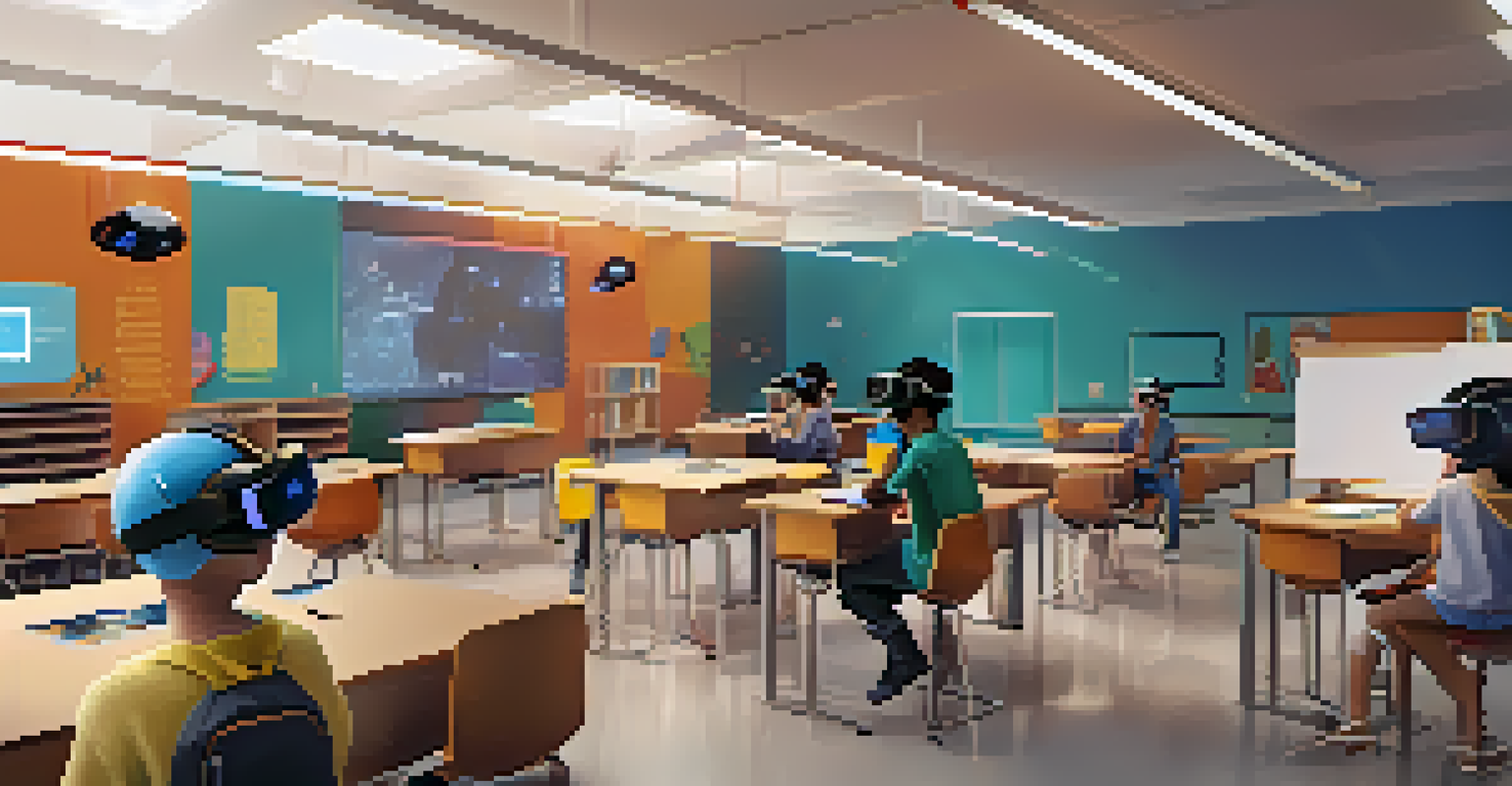The Role of Digital Storytelling in Education and Access

Understanding Digital Storytelling in Education
Digital storytelling blends traditional storytelling with digital tools, allowing educators to present information in engaging ways. This method harnesses multimedia elements like videos, images, and audio to create narratives that resonate with students. By tapping into familiar technologies, educators can capture students' attention and enhance their learning experience.
Storytelling is the most powerful way to put ideas into the world today.
Imagine a history lesson where students watch a short documentary rather than reading a textbook. This vivid presentation can ignite curiosity, making learners more eager to explore the topic further. Digital storytelling not only aids in retention but also fosters critical thinking by prompting students to analyze and interpret different media forms.
Moreover, digital storytelling can cater to various learning styles. Visual learners benefit from graphics and videos, while auditory learners engage with podcasts or narrated stories. This inclusivity ensures that all students have the opportunity to connect with the material in a way that suits them best.
The Power of Engagement Through Storytelling
Engagement is key in education, and digital storytelling provides a unique way to connect with students. When learners relate to stories, they are more likely to participate in discussions and express their thoughts. This engagement can lead to deeper understanding and retention of information, as students see themselves in the narratives presented.

For example, a classroom project where students create their own digital stories about their family history can foster a sense of ownership and pride in their work. This personal connection encourages students to invest more effort into their projects, resulting in richer learning experiences. Through storytelling, students learn to communicate their ideas effectively and creatively.
Engagement Boosts Learning
Digital storytelling captivates students, enhancing their participation and understanding through relatable narratives.
Additionally, digital storytelling promotes collaboration. Students can work together to brainstorm ideas, share resources, and give feedback on each other's narratives. This teamwork not only enhances the learning experience but also helps build essential social skills.
Enhancing Accessibility with Digital Narratives
One of the most significant advantages of digital storytelling is its potential to improve accessibility in education. Traditional educational resources can often be limited in their reach, but digital narratives can be shared widely and easily adapted. This flexibility allows educators to create content that meets diverse needs and learning preferences.
Technology will not replace great teachers, but technology in the hands of great teachers can be transformational.
For instance, adding subtitles to videos or providing audio descriptions can help students with hearing or vision impairments engage with the material. By utilizing various formats, digital storytelling ensures that all learners have the tools they need to succeed. This inclusivity is crucial in creating equitable educational opportunities for everyone.
Furthermore, digital storytelling can break geographical barriers. Students from different backgrounds can share their stories and experiences, fostering a global understanding among peers. These connections can enrich the learning environment by exposing students to diverse perspectives.
Fostering Critical Thinking Through Digital Storytelling
Digital storytelling encourages students to think critically about the information they consume and create. When tasked with producing their own narratives, students must evaluate sources, analyze data, and construct coherent arguments. This process sharpens their analytical skills and promotes a deeper understanding of the subject matter.
For example, when creating a digital story about climate change, students might research various viewpoints and data sources. This exercise not only teaches them about the topic but also equips them with the skills to discern credible information. Critical thinking is a vital skill in today's information-rich world, making digital storytelling an invaluable educational tool.
Accessibility for All Learners
Digital narratives improve educational accessibility by adapting content to meet diverse learning needs and preferences.
Moreover, students learn to appreciate the power of narrative in shaping opinions and beliefs. By understanding how stories impact society, they become more aware of the media they consume, leading to responsible citizenship and informed decision-making.
Creating Community Through Shared Stories
Digital storytelling can foster a sense of community among students, teachers, and parents. When stories are shared, they create connections that transcend classroom walls. These narratives can spark conversations and encourage collaboration, promoting a supportive learning environment.
For instance, a school-wide project where students share their digital stories about community heroes can unite the school in celebration of local achievements. Such initiatives not only build rapport among students but also strengthen ties between the school and the community. The shared experience of storytelling creates a collective memory that can enhance school culture.
Additionally, teachers can use digital storytelling to share their experiences and insights with colleagues and parents. This transparency helps build trust and fosters a collaborative approach to education, where everyone feels invested in the students' success.
Equipping Educators with Digital Storytelling Tools
To fully leverage the benefits of digital storytelling, educators need access to the right tools and resources. A variety of user-friendly platforms exist, allowing teachers to create, edit, and publish digital narratives with ease. Familiarity with these tools is essential for educators to effectively integrate storytelling into their curriculum.
Training workshops can empower educators to explore different digital storytelling methods, from video production to podcasting. By enhancing their skills, teachers can inspire creativity in their students while ensuring that they meet educational standards. The more prepared educators are, the more successful their storytelling initiatives will be.
Fostering Critical Thinking Skills
Creating digital stories encourages students to critically evaluate information and develop coherent arguments.
Moreover, educators can encourage students to explore storytelling tools independently. By guiding them through the process of selecting the right platform for their projects, teachers can foster self-directed learning. This empowerment encourages students to take ownership of their learning journey and express themselves authentically.
The Future of Digital Storytelling in Education
As technology continues to evolve, the potential for digital storytelling in education will only expand. Emerging technologies like virtual reality and augmented reality have the power to create immersive storytelling experiences. These innovations could revolutionize how students interact with content, making learning more engaging and impactful.
Imagine a classroom where students can step into historical events or explore distant planets through virtual storytelling. Such experiences can deepen understanding and spark curiosity in ways that traditional methods cannot. The future of digital storytelling holds exciting possibilities for enhancing educational experiences.

However, it's essential to remain mindful of the digital divide. As we embrace new technologies, we must ensure that all students have access to these resources. Bridging this gap will be crucial for creating an inclusive educational landscape where every learner can thrive.